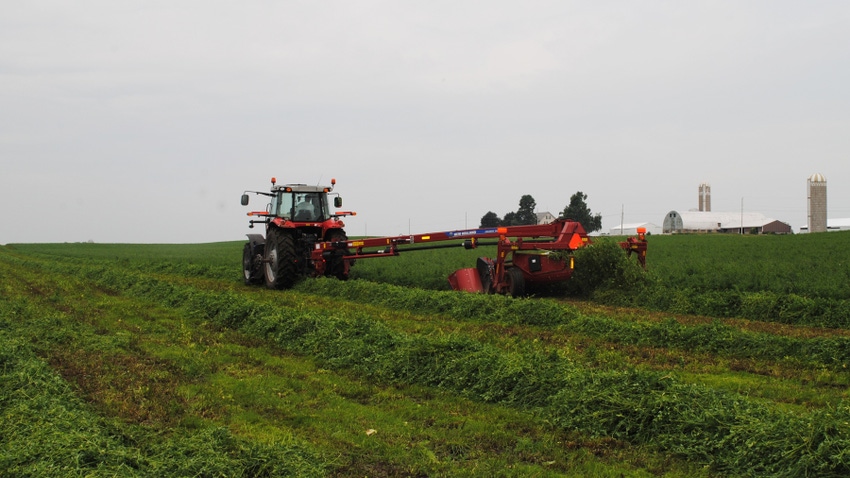Alfalfa’s untold virtues
Dairy Program: In a head-to-head comparison, alfalfa still beats grass.
February 28, 2024

by Matt Lippert
Grasses have become more popular for inclusion in dairy diets. There are many methods: a mixture of grasses and alfalfa, pure stands of annual cool-season grasses such as Italian ryegrass, winter cereals such as triticale.
There are multiple reasons for interest in grasses, but one is that they can have higher fiber digestibility than alfalfa. Documentation of this trend is found in the World Forage Analysis Superbowl results and in commercial lab averages in reports on different types of hay crops.
Great value in alfalfa
Interest in different crops comes and goes, and alfalfa has had a great run. Is it over? Alfalfa still has many great values. It is a perennial that protects the soil for many years; it produces its own nitrogen; it is high in protein; and it is deep-rooted and somewhat drought resistant.
Is a lower neutral detergent fiber digestibility the Achilles’ heel for alfalfa? The challenge is that dairy producers and nutritionists are interested in high-forage diets for lactating cows, and as cows keep increasing their production, the need for highly digestible fiber is greater than ever.
Laboratory average NDF digestibility values miss some aspects about alfalfa that need to be told. Just as corn silage is really a composite of two products — the grain and the fodder (stalk and leaves) — alfalfa is a composite of leaves and stems. The leaves have little to offer as far as fiber quality, but they are high in protein and the fiber is excellent quality; it’s the stem that is lower in fiber digestibility.
When alfalfa matures and increases in lignin, the lignification and deterioration of fiber digestibility occur primarily in the stem. Also, as alfalfa matures, the stem-to-leaf ratio tilts toward the stem. So, alfalfa becomes more proportionately stem, and the stem becomes increasingly less digestible and more lignified with plant maturity.
Not everything is undesirable about the stem. Just as some rations become so digestible and have so little chew factor left that straw is added to the diet to keep the rumen working, the stiff alfalfa stem can be good for effective fiber and rumen health — as long as it is kept in moderation.
In defense of alfalfa in competition with grasses, the decline in fiber quality is greater in grasses than it is for alfalfa.
Alfalfa leaves and stems
When alfalfa leaves and stems are analyzed separately, we find the leaves are highly digestible. That high digestibility is also shown in the very shortest intervals for detecting fiber digestibility — 12 hours, for example. The early digestibility of alfalfa is greater than most grasses, even if the total digestibility of the grasses is greater. Even though alfalfa is lower in digestibility than high-quality grasses, nearly all alfalfa that will be digested has been made available prior to a 30-hour digestibility interval.
Modern dairy cows with 60-pound or greater dry matter intake will have some portion of a grass forage leave the rumen before it has an opportunity to express its total digestibility. This levels the playing field between alfalfa and grass, as alfalfa will deliver all it has to deliver more rapidly than the grasses. High-grass diets may have problems with rumen fill reducing DMI and may not have as much effective fiber as alfalfa.
Alfalfa has a unique fit in dairy rations, providing economical protein, being a much-needed perennial crop, and delivering a rapidly available, highly digestible fiber fraction that is somewhat missed if you only look at the averages. Its fit with corn silage is also excellent.
Think about the opportunities with grasses, but don’t forget about alfalfa.
Lippert is the University of Wisconsin Extension agriculture agent in Wood County and the dairy and livestock agent in Clark County.
You May Also Like



